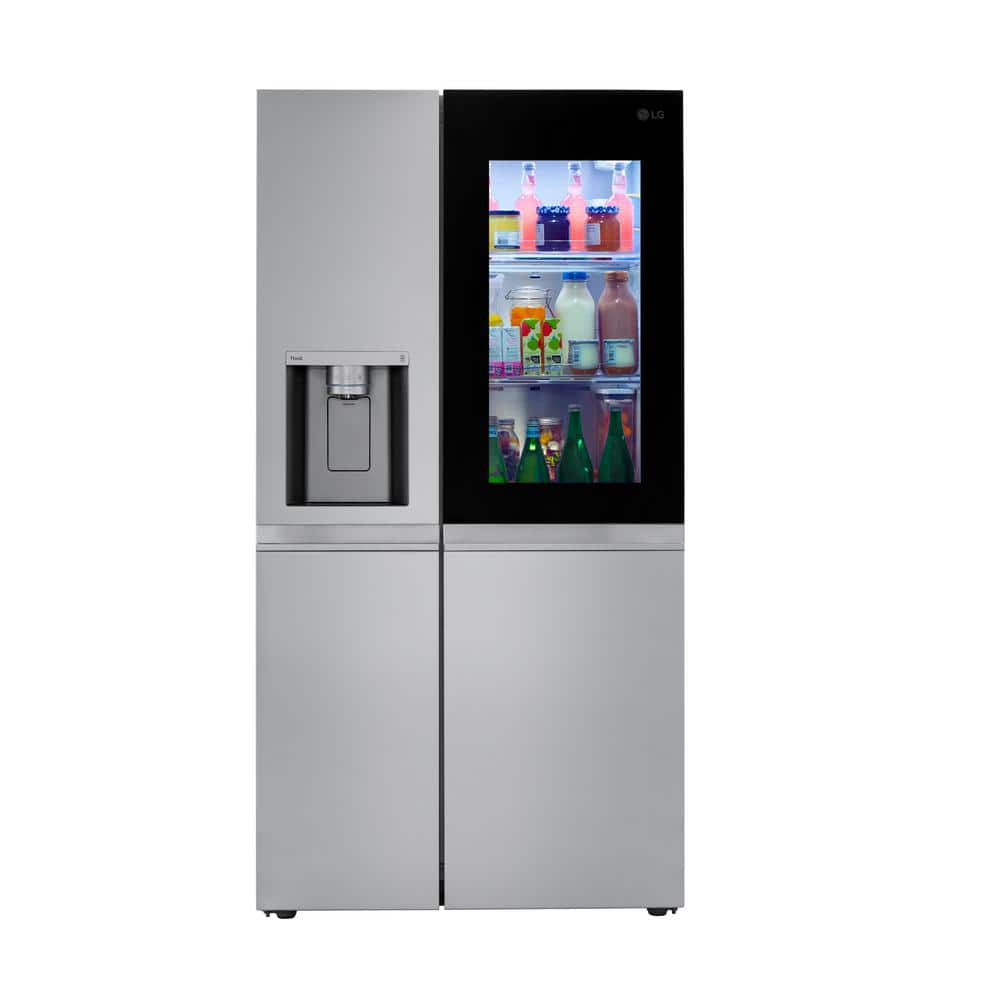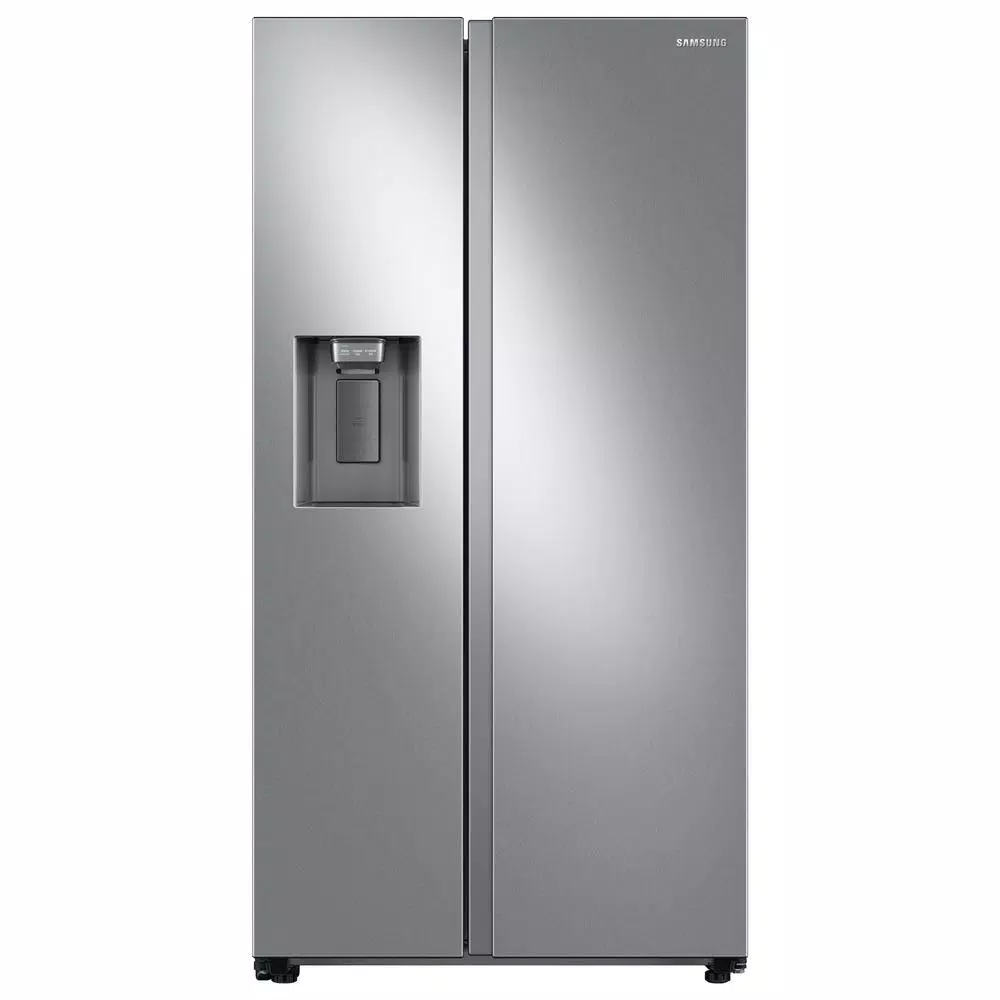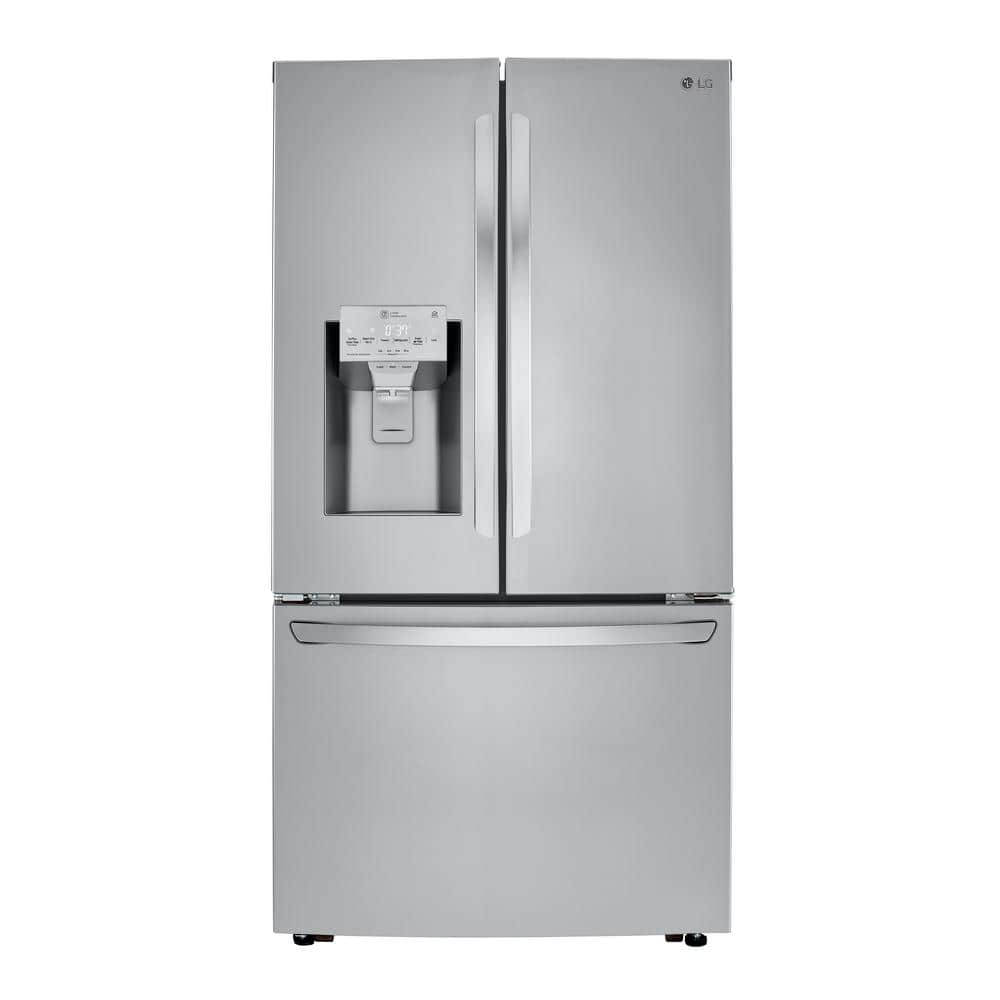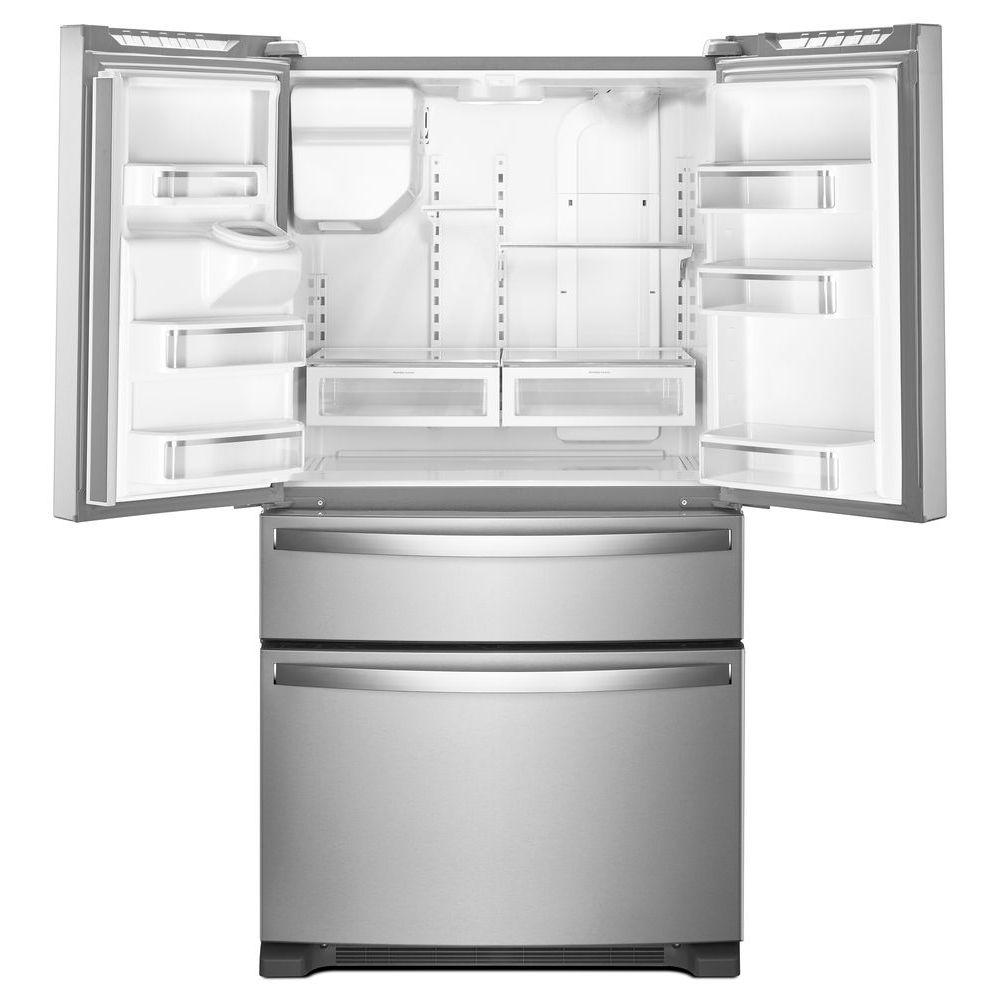LG 27 cu. ft. Side by Side Refrigerator with InstaView and Dual Ice Maker with Craft Ice in PrintProof Stainless Steel
Edge-to-Edge InstaView Design. Dual Ice Maker with Craft Ice. Smooth Touch Ice Dispenser with Uvnano.
Express your stylish side or let your organized side have it all – either way, capture your best side in LG’s side-by-side InstaView refrigerator with Craft Ice. The modern exterior includes flat doors, discreet pocket handles and a seamless, edge-to-edge InstaView glass panel. Just knock twice, take a look and see the possibilities. An organizer’s dream, you can stock up for the week and store it all in easy sight and with easy access to all 27 cu. ft. of space. Then, take your entertaining to the next level with LG’s exclusive slow-melting Craft Ice for better-tasting drinks from cocktails to smoothies.
- Go ahead and stock up – not only does this refrigerator offer a generous 27 cu. ft. of space, but the vertical door design also offers equal access to fresh and frozen foods; keep items of all sizes where they’re easy to see and reach
- Our latest InstaView window is 23% larger with a tinted, frameless edge-to-edge design; so now you can see even more with just 2-quick knocks on the glass panel; see your favorites in an instant without ever opening the door, from drinks to frequently used condiments to snacks for the kids
- Take another glimpse every time you walk by this fresh design from LG and take in the contemporary vibe; flat panels are enhanced with discreet pocket handles that offer easy access
- Dual ice makers, dispensed from the door and located in the freezer compartment, automatically produce ice so you never run out; creates standard ice cubes, crushed ice and LG’s exclusive round craft ice – crafted to melt slower, chill more efficiently and help beverages taste their best for longer; from craft cocktails & whiskey to soft drinks, lemonade, even iced coffee, give your beverages the perfect ice
- Dispense everything from chilled filtered water to filtered cubed or crushed ice with just a light touch; the stainless design is both beautiful and practical, with a PrintProof finish that resists smudges and fingerprints
- CoolGuard metal panel helps maintain your chill while adding a premium look; it brings the pro-style look you love from the exterior to the interior, with the added bonus of enhanced cooling
- Now you can have all of the things you love about stainless, without the need for special cleaners or constant attention; LG’s PrintProof fingerprint and smudge resistant finish easily wipes clean with a soft, dry cloth for a distinctive kitchen that handles real-life in style
- LED panels located in the ceiling cascade light throughout the fresh food and freezer sections; see clearly and find food quickly with pure, white LED lighting
- Now you see them, now you don’t – we moved the refrigerator and freezer temperature controls to the inside of the fridge section to keep the exterior pristine while still keeping the controls close at hand
- Multi-air flow system is designed to maintain superior humidity and temperature levels to help keep your food fresher, longer; digital sensors constantly monitor conditions within the refrigerator and strategically-placed vents in every section to help surround your food with cool air no matter where you put it
- Located in the top of the fresh food section, the door cooling and vent extends the reach of LG’s smart cooling system; blasts of cool air reach all areas of the refrigerator including the door to help maintain consistent temperatures from top to bottom
- You go all out when it comes to choosing fresh foods for your family; LG linear cooling helps you keep them that way; the linear compressor reacts quickly to maintain temperatures within 1°F of the setting, to keep produce fresher and help preserve all foods as fresh and flavorful
- LG’s new pharmaceutical water filter, NSF certified to reduce more contaminants than our previous filters, for freshness you can taste
- UVnano kills up to 99.99% of bacteria on the built-in water dispenser nozzle every 24 hours; filtered water flows through the clean nozzle for fresher, better-tasting water in every glass and added peace of mind
- From making extra ice for tonight’s dinner party while you’re at work to adjusting temperatures with simple voice commands, LG refrigerators with ThinQ technology will change the way you think and the way you live; simply download the free ThinQ app to your Android or iOS device and let the possibilities unfold; receive notifications on your smartphone when the door is open or your water filter needs to be replaced; control refrigerator and freezer temperatures remotely; diagnose issues and get quick, expert advice; or, use the voice-activated features of Google Assistant or Amazon Alexa; let the advantages of smart technology work for you
- When you buy a refrigerator, you don’t want to worry that it won’t last; because the linear compressor motor uses fewer moving parts and operates more efficiently, LG confidently backs the motor with a 10-year limited warranty
- ENERGY STAR qualified LG refrigerator exceeds federal energy standards to positively impact your energy bill, your energy consumption and most importantly, the environment
Additional information
| Depth (Excluding Handles) | 33.44 |
|---|---|
| Depth (Including Handles) | 33.44 |
| Depth (Less Door) | 29.125 |
| Depth With Door Open 90 Degrees (In) | 51.125 |
| Height to Top of Door Hinge (in.) | 70.25 |
| Height to Top of Refrigerator (in.) | 69.38 |
| Product Depth x Height x Width (in.) | 33.44 x 70.25 x 35.87 |
| Refrigerator Width (In.) | 35.87 |
| Certifications and Listings | ADA Compliant,Energy Star,UL Certified |
| Manufacturer Warranty | Limited Warranty: 1 Year Parts & Labor, 5 Years Sealed System Parts & Labor, 5 Years Compressor (Parts & Labor), 6-10 Years Linear Compressor (Parts Only) |






by Mike
Love, love this refrigerator! Has everything that I need and having the dual icemakers is a huge plus! The craft ice is amazing. Highly recommend.
by James
It looks great in the kitchen. Fridge has good amount of room and doors hold a lot of stuff that would end up occupying shelf place otherwise. Very impressed with the craft ice and overall freezer functioning. Have owned it only for a month so I am hoping it has a long life and it’s performance remains the same. Nothing to complain about until now.
by Gabe
I did a ton of research before ultimately buying this fridge and let me tell you, it’s amazing. Great capacity, great design, and one of the best water systems I have seen in a fridge.
by Shawn
Absolutely love. Could use a meat cheese drawer and place for eggs. But its schnazzy!
by David
Delivered on time and was the expected product. Unfortunately after the techs installed it, it quit working before they even left. No lights, no water, no ice, and most importantly no refrigeration. Second one showed up about 2 weeks later and worked flawlessly. Great fridge, mediocre experience. Home Depot addressed it as quickly as possible. No complaints here.
by Darren
Love everything about he fridge with only 1 exception at this time. Getting use to the way the door handles are positioned takes a little time. Smashed my fingers more then once with the doors closing if you grab it by the sides of the door. But that’s mostly my challenge. Craft Ice, peak-a-boo door and the over all look is awesome.